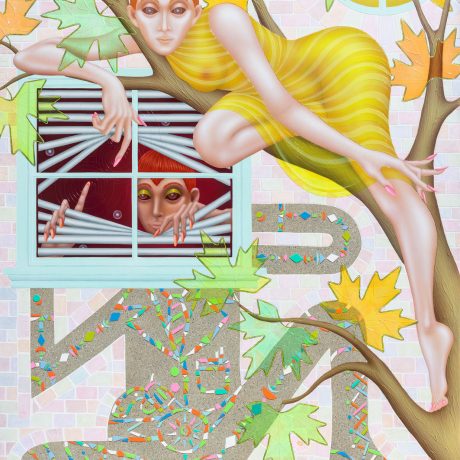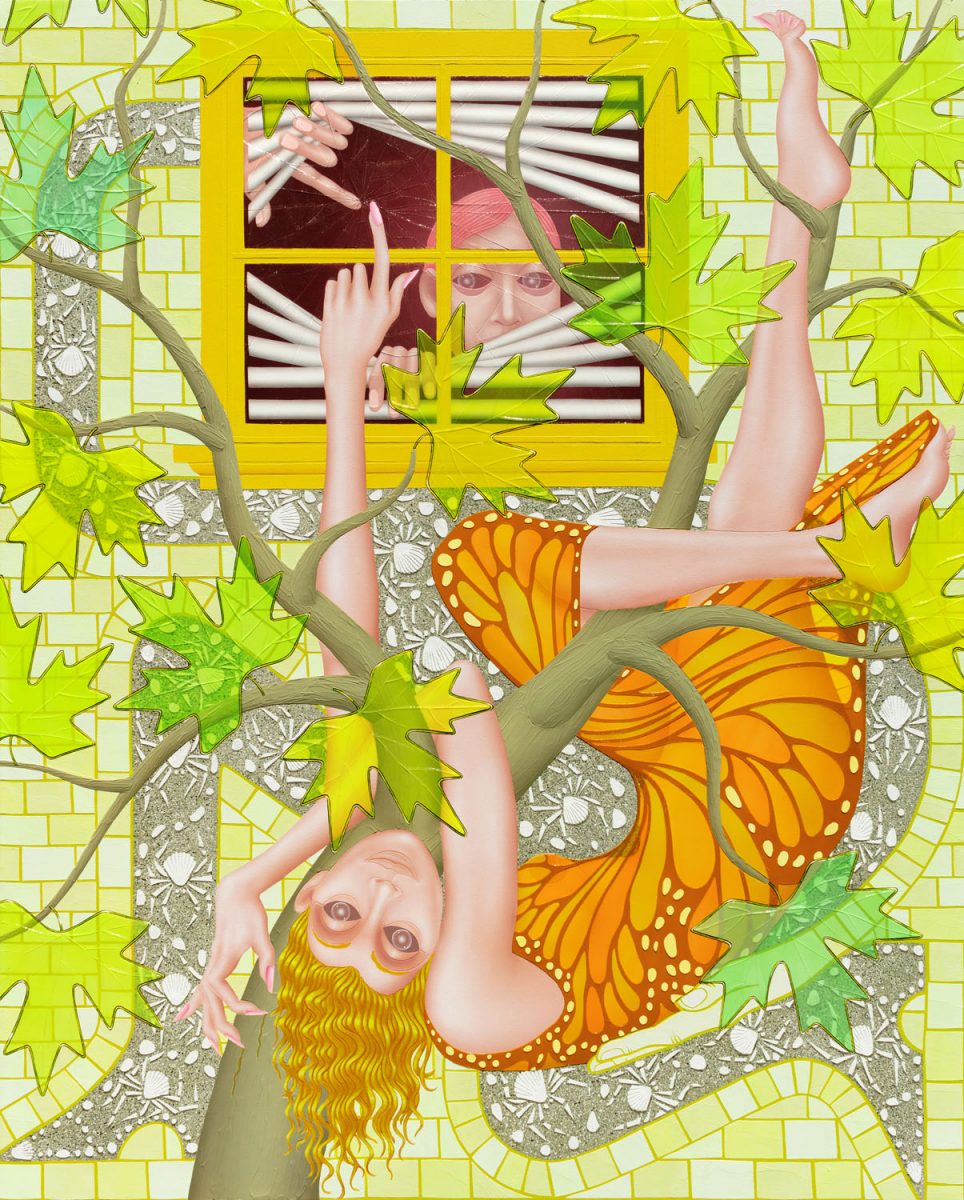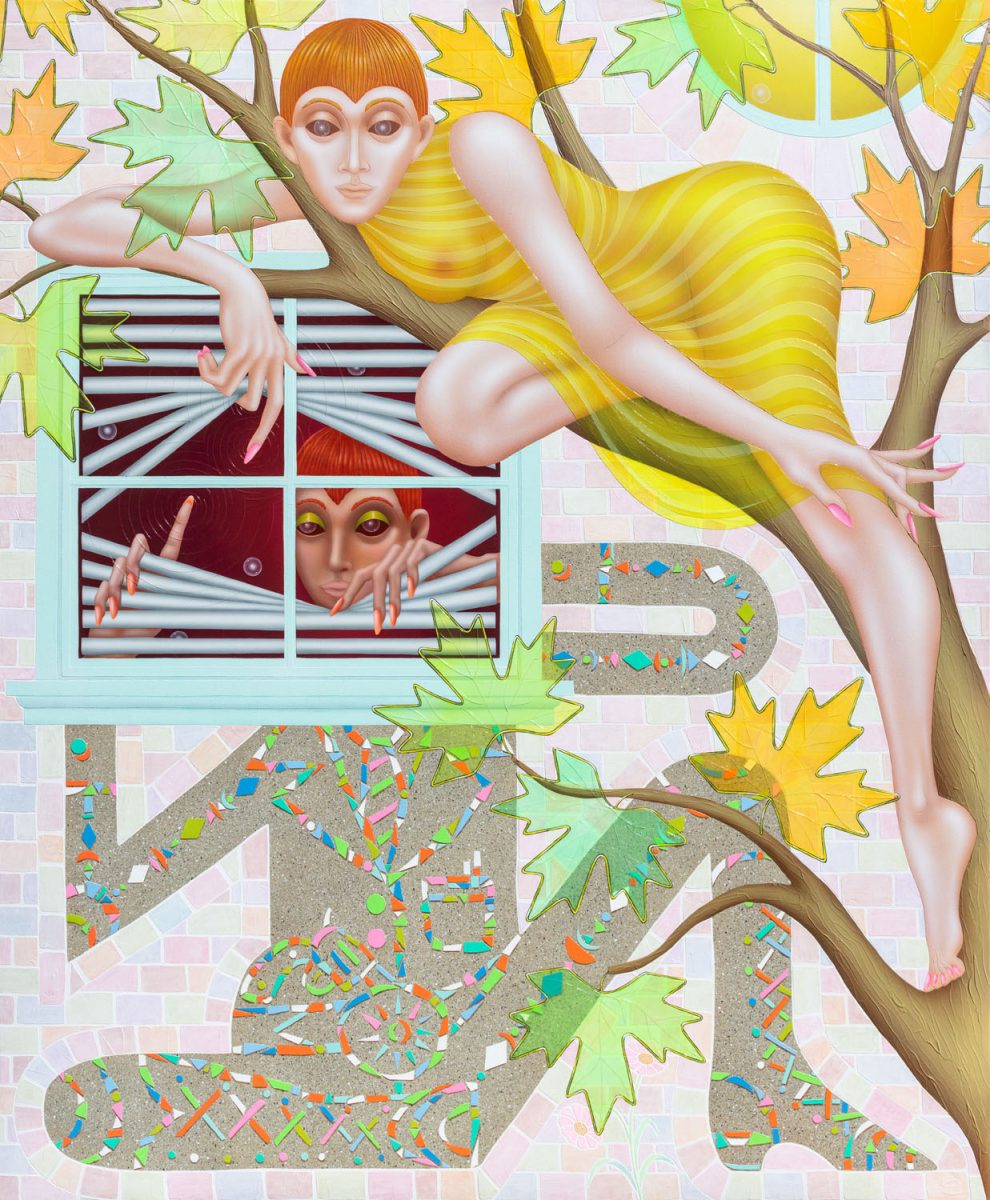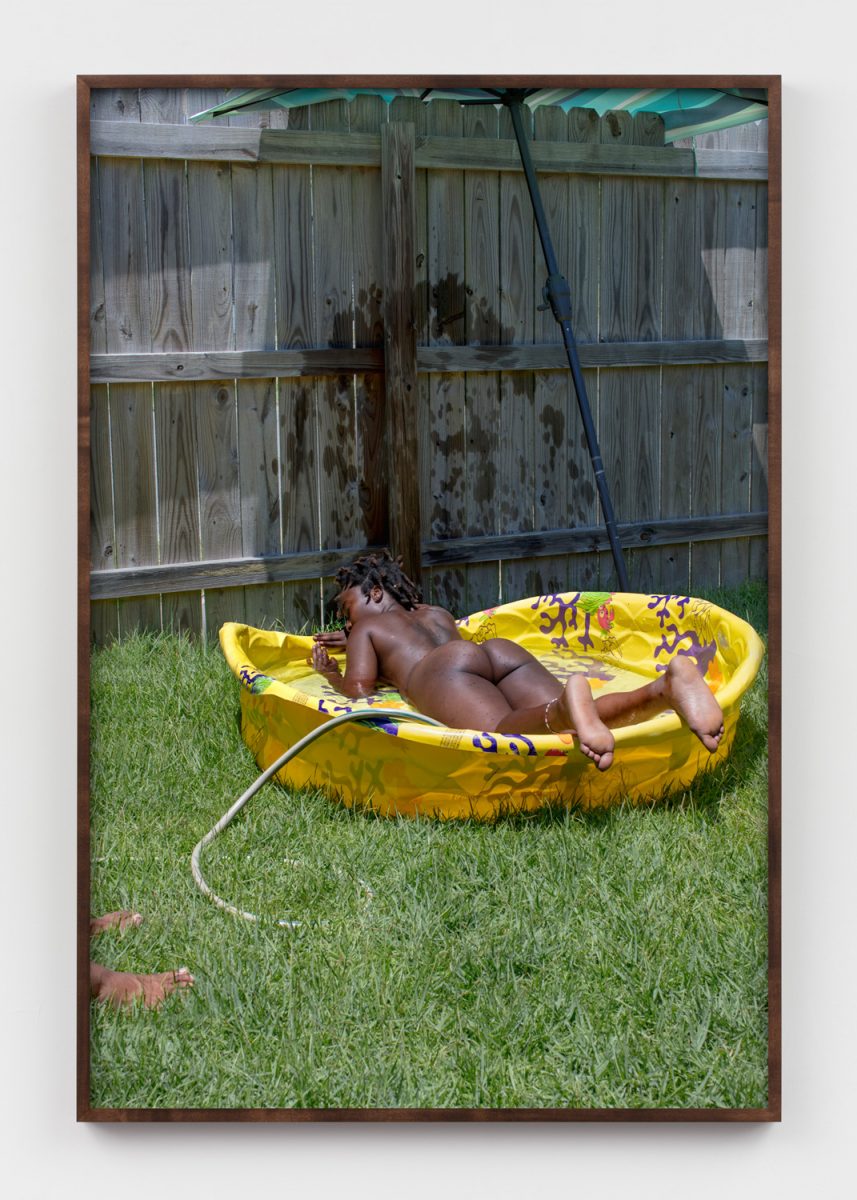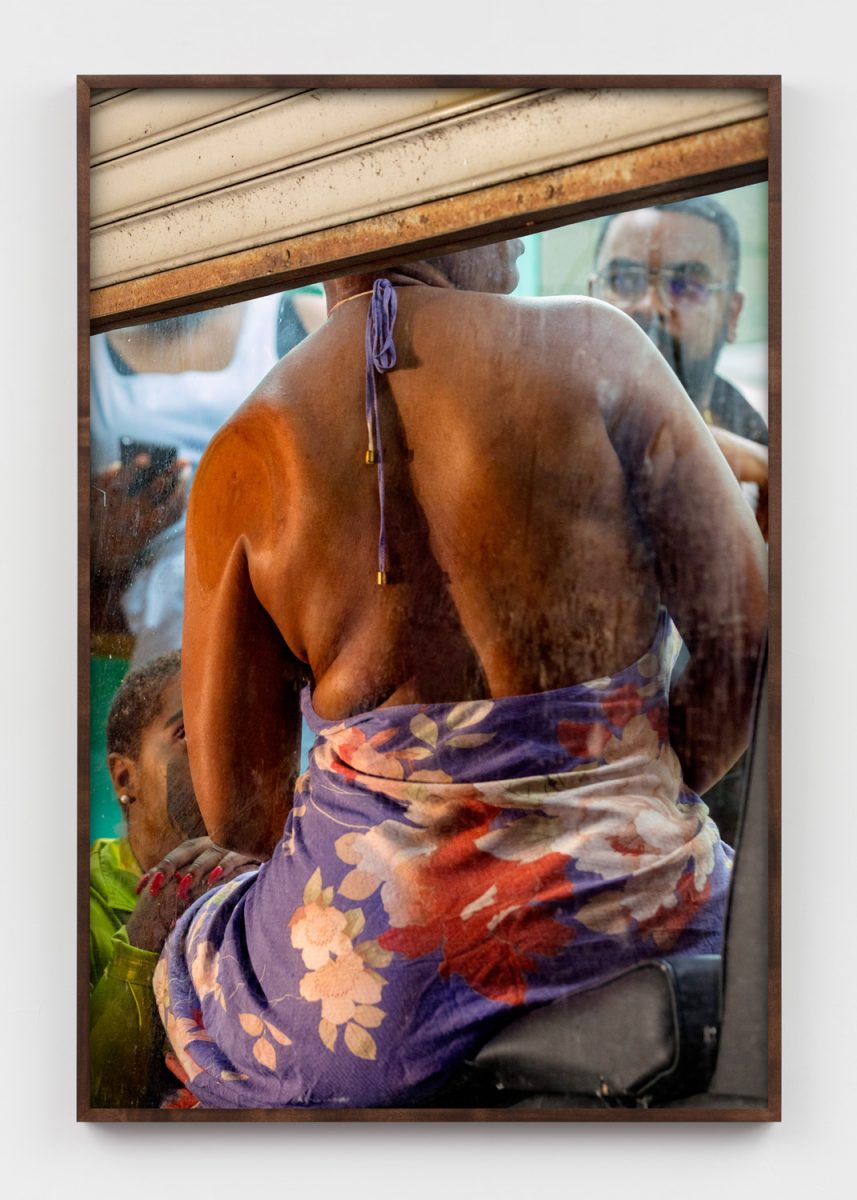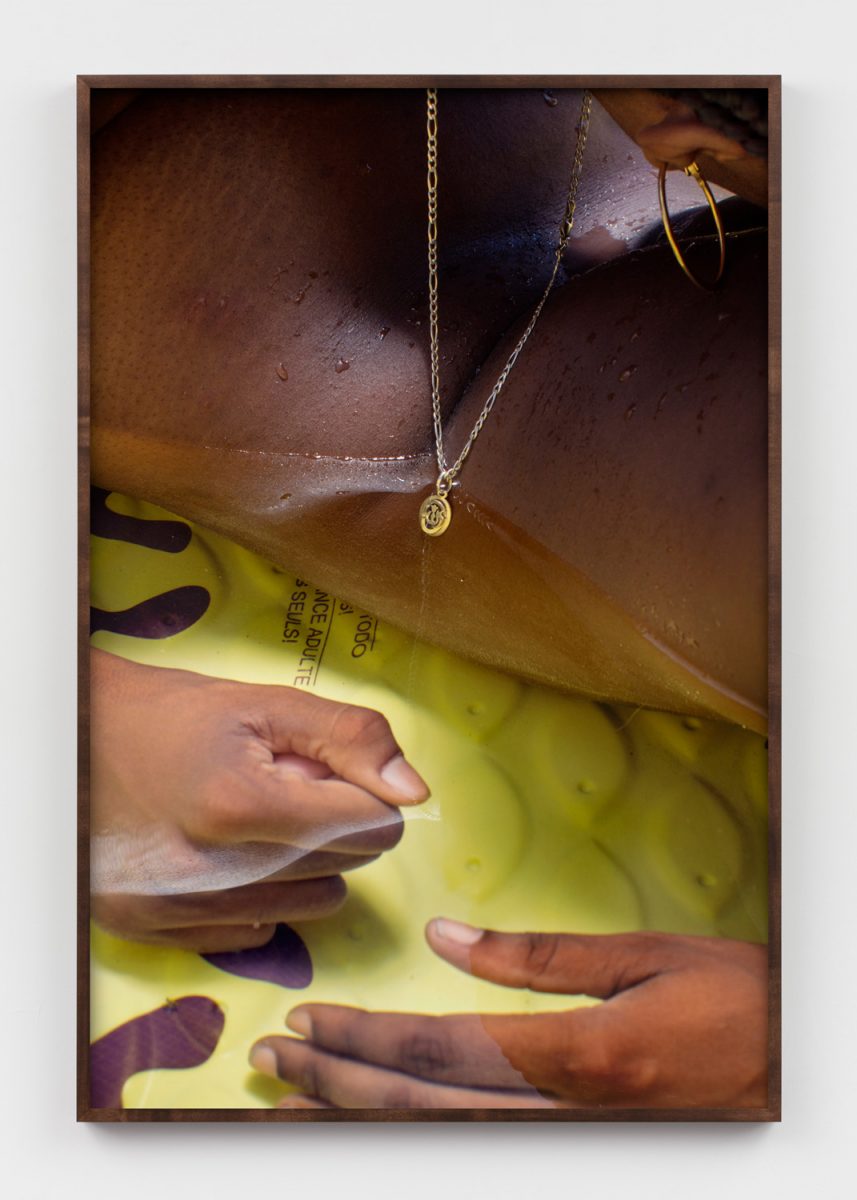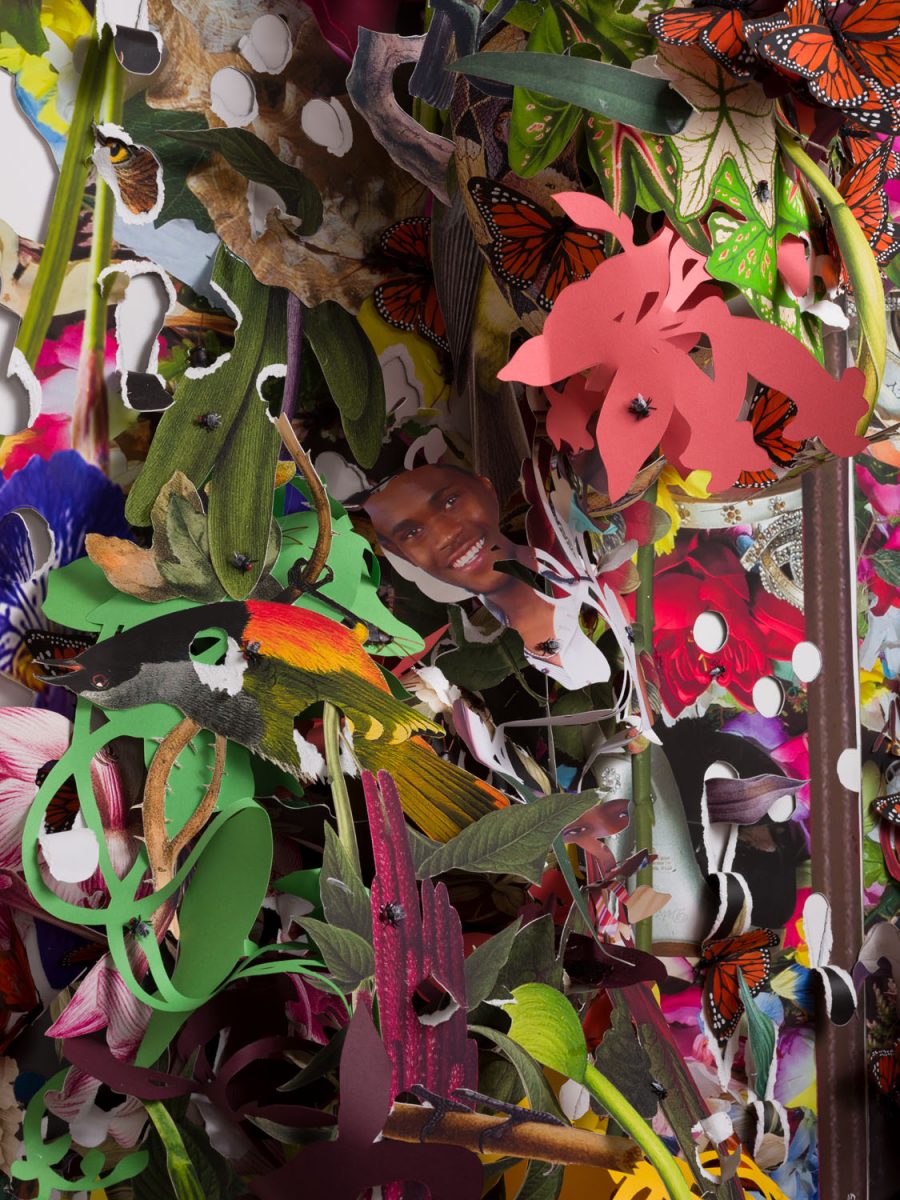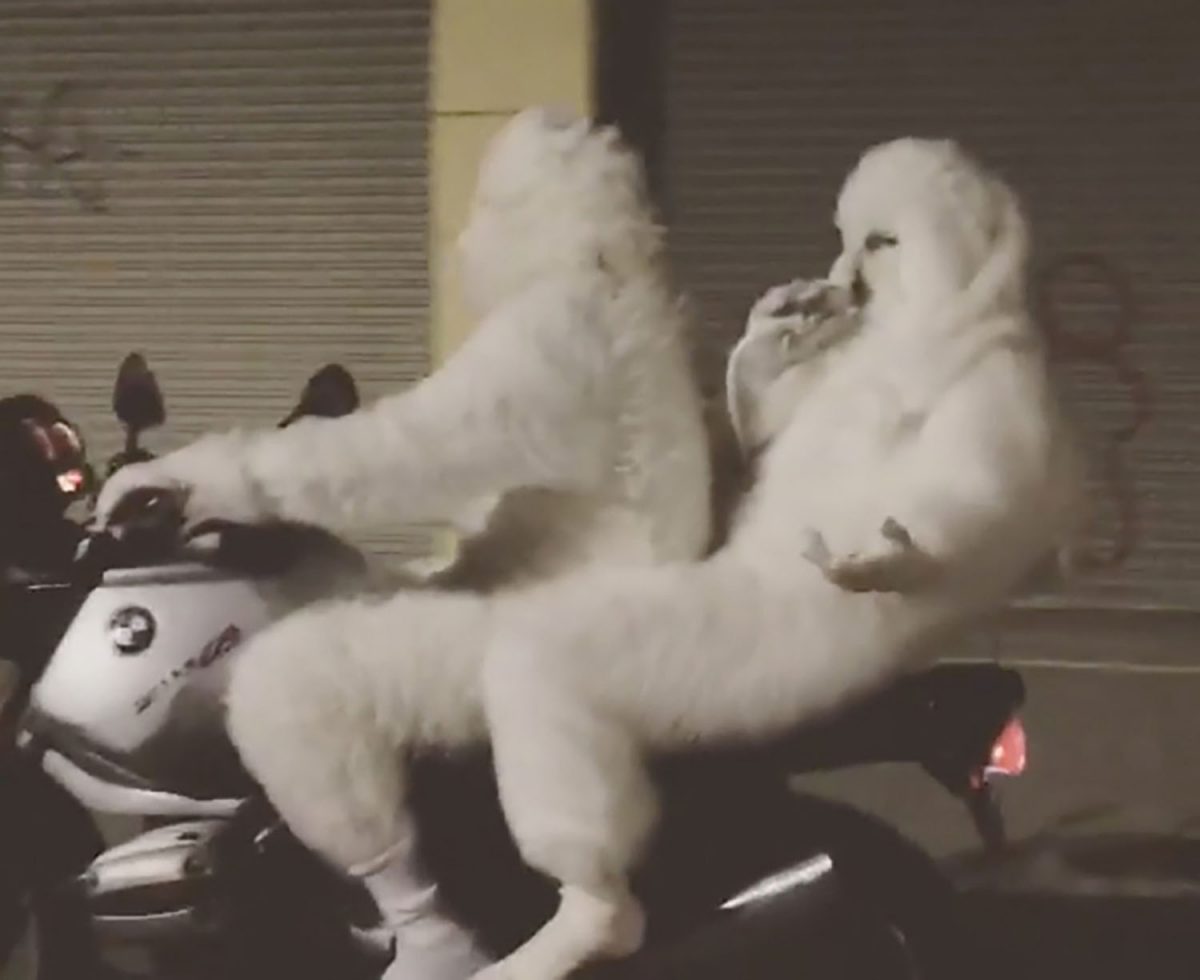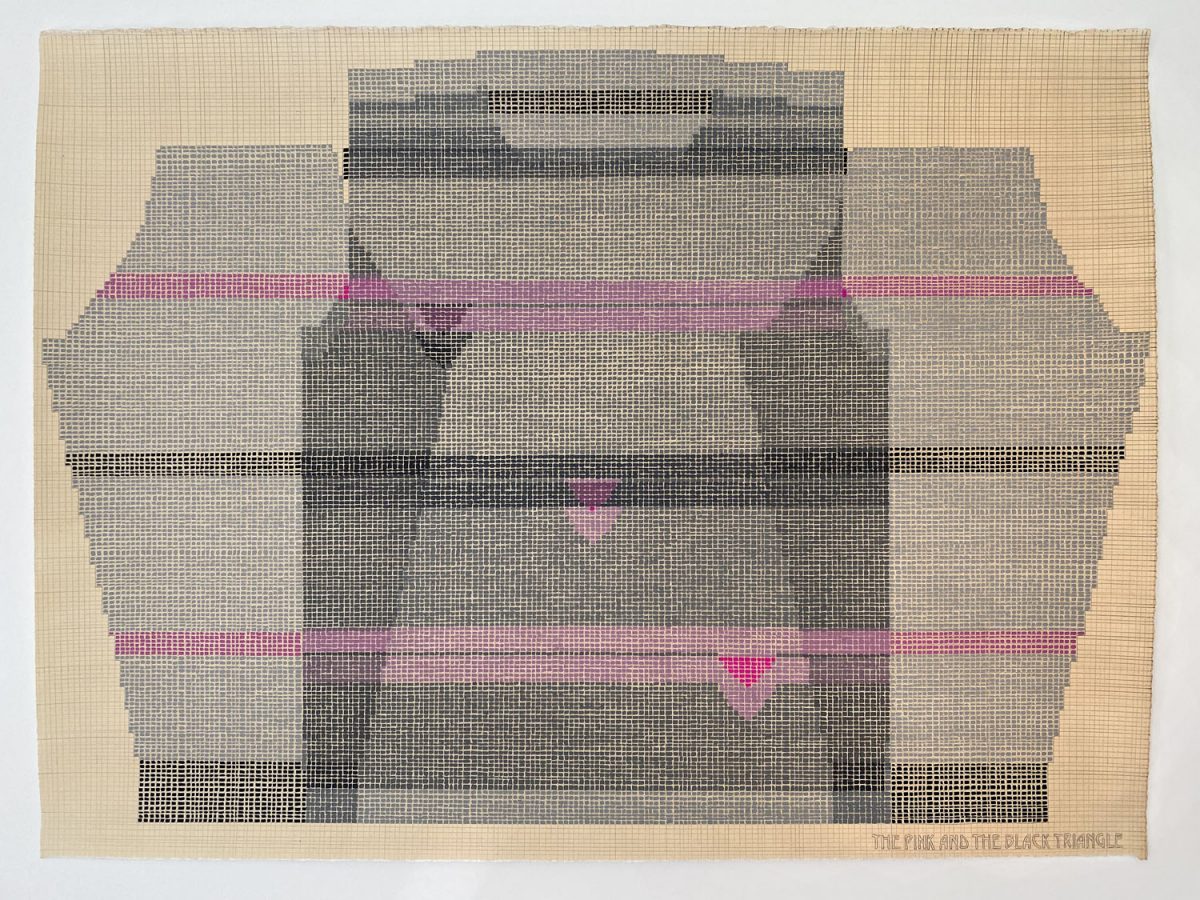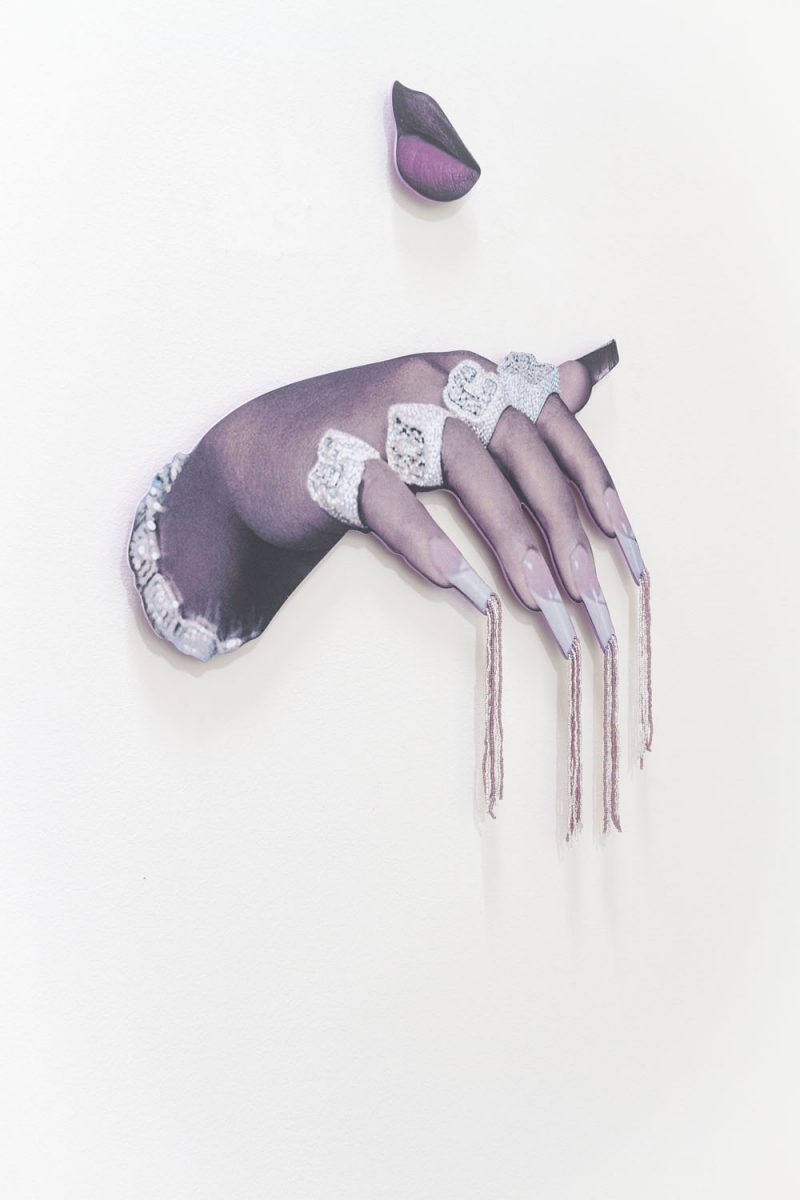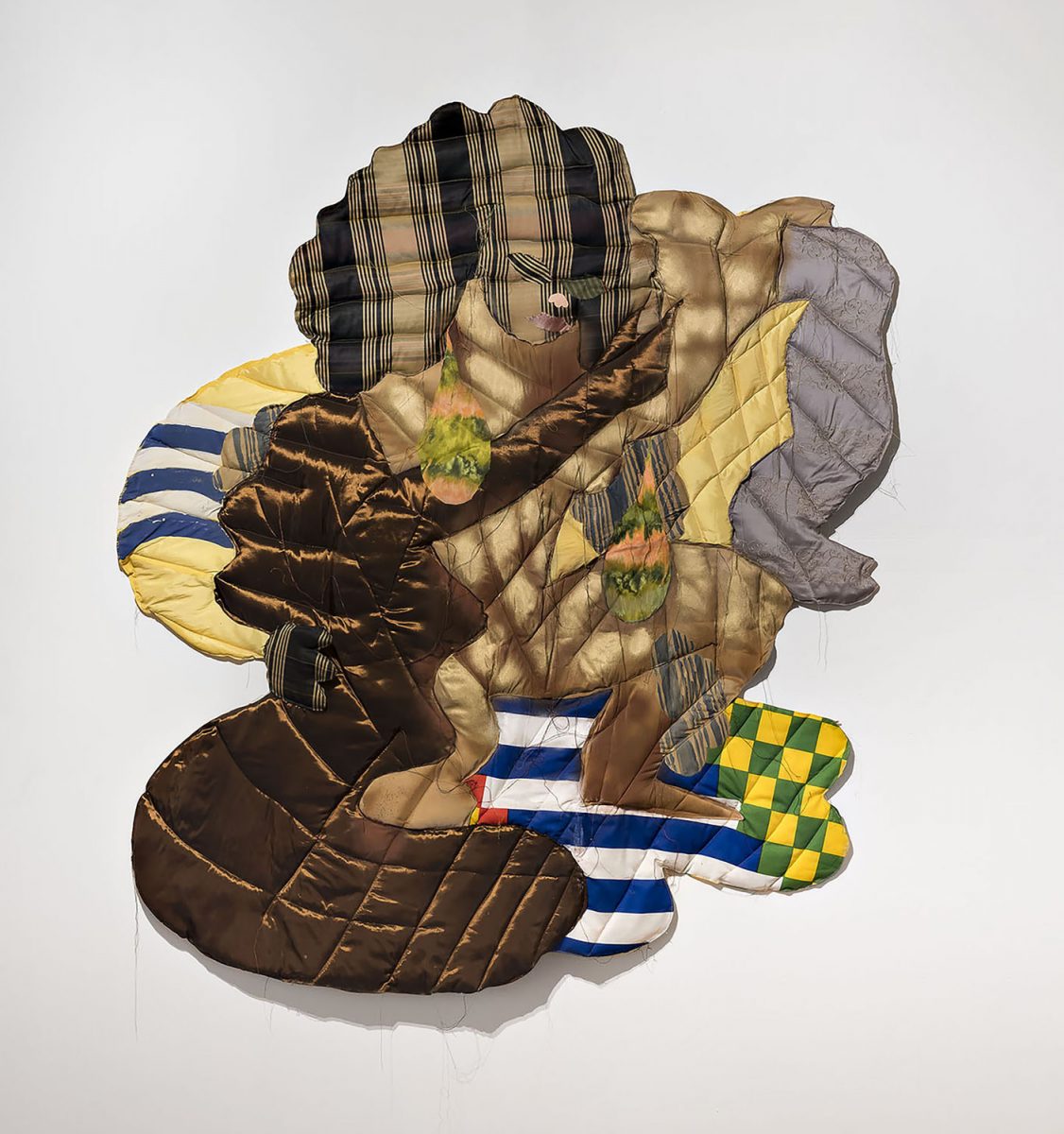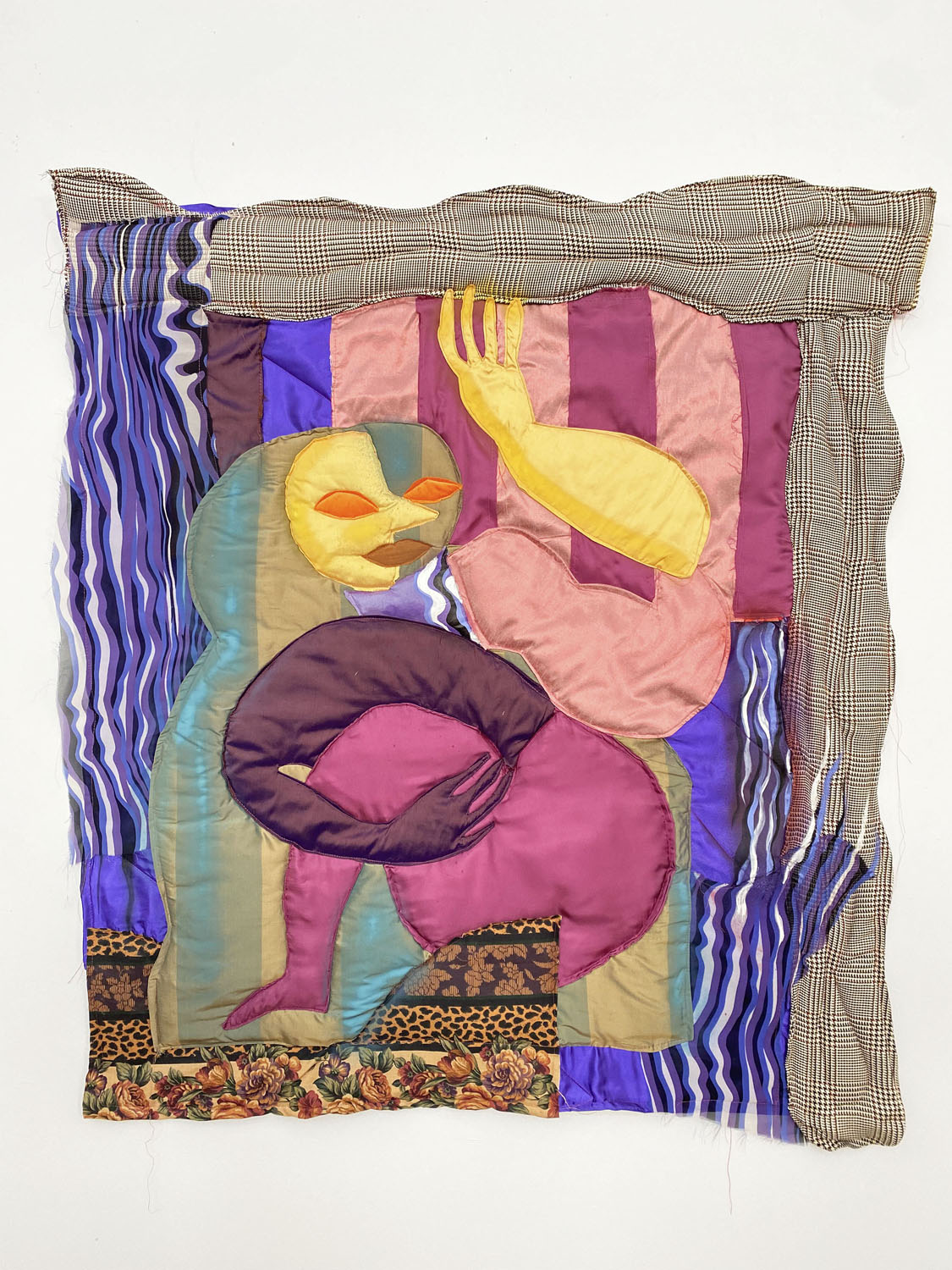
Cuídame, Maria Guzmán Capron, 2021
The peculiar creature in Cuídame, Maria Guzmán Capron’s textile tapestry, at once hides and reveals itself amidst the patchwork of fabrics that make up its surroundings. Capron’s character mimics the constant dance of social interaction, the dual art of disclosure and dissimulation. How much of yourself do you give away, at what point, where, and to whom? When do you blend in, and when do you stand out?
These questions weave through Intersecting Selves, a group exhibition showing at Shulamit Nazarian gallery in Los Angeles. Spanning photography, painting, collage, sound work and fabric, the artworks explore the constant push-pull between desires for privacy and desires for exposure, and the personal and political conditions that influence it.
- Wendell Gladstone, Cocoon, 2021 (left). Intersecting Selves, 2021 (right)
The trio of bodies in Wendell Gladstone’s figurative paintings hint at the plurality of individual identity. His svelte, otherworldly characters peer through interior windows, climb trees or are embedded within walls, depicting a layering of public and private selves.
In the wall-based sculptures of Julie Henson, identity formation is selective. Having been exposed to the performativity of church rituals and religious idolatry from a young age, Henson explores how these methods are transposed into the digital realm. She plays with the parallels between screen and stage, presenting social media as a theatre in which celebrities are constructed, watched and worshipped. But as her use of negative space suggests, online identity is as much about what we don’t reveal as what we do.
Amir H. Fallah, who describes himself as occupying a “limbo, hybrid world of not being fully Iranian, and not completely American”, also uses concealment to interrogate systems of self-presentation. He veils his painted figures in order to ask how you can create a portrait that does not show someone’s likeness; in telling the story of his subjects through the objects and symbols that make up their personhood instead, he moves away from traditional modes of representation in Western art.
“How much of yourself do you give away, at what point, where, and to whom?”
Fallah affords his subjects a privacy that is reflected in the photographs of Elliott Jerome Brown Jr. While intimate body parts are brought to the fore, the faces of Brown’s subjects are obscured in shadow or cropped out, denying his viewers the power and privilege of gazing unchecked.
Evasion as a means of resistance is a tactic employed by Ellen Lesperance, too, whose paintings pay homage to women activists of the anti-nuclear movement. In order to elude the patriarchal legacy of figurative painting, Lesperance renders their protest knitwear rather than their bodies, recreating the patterns of their armour-like sweaters in gouache on paper.
- Ebony G Patterson, ...for souls...for soles...between the cuts, beneath the leaves, below the soil.., 2021
For many of the exhibited artists, the obfuscation of identity is a choice, a protective mechanism of sorts. In Tori Wrånes’ performance art, monstrous avatars stand in for the id, the hidden depths of the self. However, Ebony G. Patterson draws attention to the bodies that have been overlooked against their will. She collages paper cuttings into a sculptural wall garden, as dense as it is intricate. Marginalised bodies are buried underneath the deceptive tangle of superficial flowers, birds and butterflies as she constructs a metaphor for colonial space.
Whether inviting closer inspection, pushing the viewer away, or doing both simultaneously, these artists disrupt conventional modes of looking. In questioning the construction of individual identity, they shift the gaze onto our own forms of self-presentation in the process.
Madeleine Pollard is a Berlin-based journalist specialising in culture and current affairs
All images courtesy the artists and Shulamit Nazarian, Los Angeles
